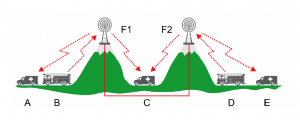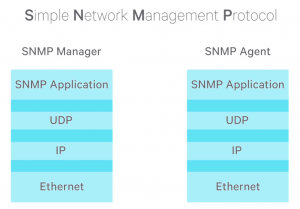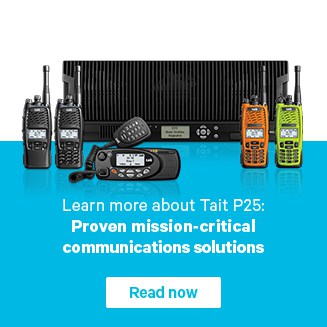Introduction to P25
P25 Network Architecture
P25 Central Site Equipment
Large radio networks often have a central, or master site controlling all individual sites. This may or may not have its own radio equipment.
A small conventional system may have no central site equipment. However, in a large conventional system, where multiple sites broadcast the same call to provide increased coverage, there is typically a master site that controls the audio that is re-broadcast from all the individual sites.

In modern P25 systems there is sometimes no additional hardware at the central site, and may be simply a software feature in the repeaters themselves. Dispatch equipment typically connects to the central site, either physically or via IP.
To the dispatcher and radio users, this group of repeaters in a large conventional system acts like a single repeater with a large coverage area. If additional capacity is needed, another set of repeaters may be installed at each site. This can provide communication to a separate group, and be independent of the first channel. However, it can still share the same linking and network equipment.
A trunked system has a controller at each site, controlling the channels. However, a trunking system may be made up of multiple sites. This collection of sites is controlled by a radio frequency subsystem controller, or an RFSS controller. Even on single site trunk systems, there will still be a radio frequency subsystem controller.
The RFSS controls which radios are permitted to access the system, and what sites they can use. The RFSS also controls which groups are valid on the system, and what sites a particular group can use. It is often involved in the routing of audio between sites, although sometimes this task is handled by the site controllers themselves. Dispatch equipment will connect to a trunking system through the RFSS, and large trunked networks can be made by joining multiple radio frequency subsystems together.
Because P25 networks are IP connected, there is often a monitoring and management system. This collects logs and call records from the network. It also monitors and displays performance and fault information. Fault management often uses the industry standard SNMP protocol allowing the radio and linking networks to be monitored and managed in one place.
In public safety for high availability, there may be more than one central site providing redundancy, in case of failure.
 Radio Academy
Radio Academy






